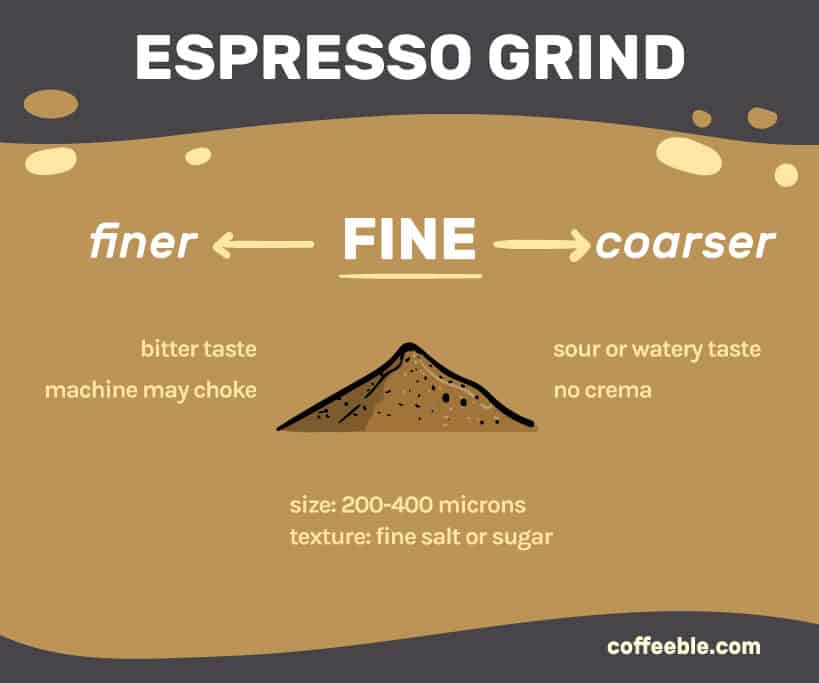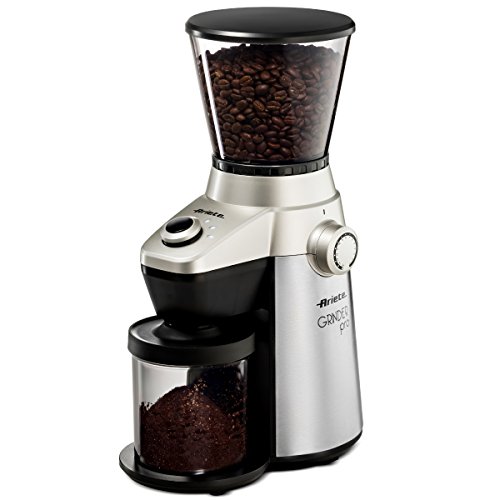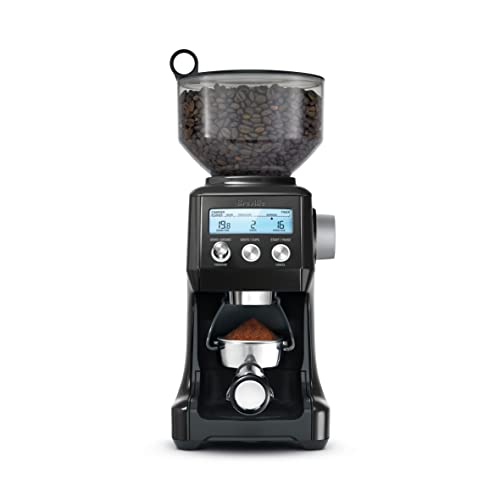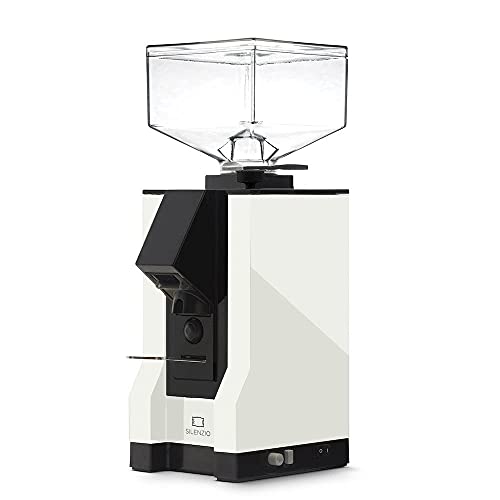While we tested lots of fantastic espresso grinders, our favorite was the Turin DF83. It’s the perfect intersection of price, function and quality. There are slightly better grinders, but none beat the value of the DF83 and we don’t feel the far larger price tags of pricier models are worth it.
Turin DF83 Coffee Grinder
- Extremely uniform grind size
- Works well with all roast profiles
- Makes bright and super tasty espresso
- Performs as well as grinders that cost $2000+
The Best Espresso Grinders for 2024
Many burr grinders claim to grind fine enough for espresso, but in the end, they lack the range to let you adapt your grind for different coffee beans and your particular espresso maker. We’ve taken the needs of espresso lovers into account and found the best coffee grinders for espresso you can buy right now.
Below you’ll find the best espresso grinders.
| product | details | Button | |
|---|---|---|---|
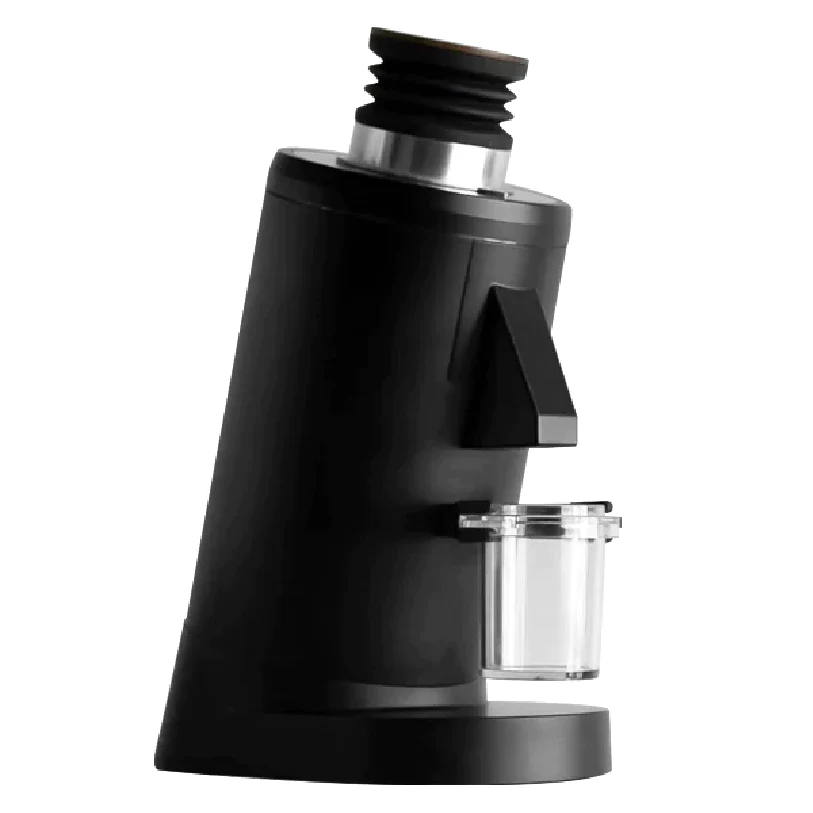
|
Turin DF83 |
|
CHECK PRICE |
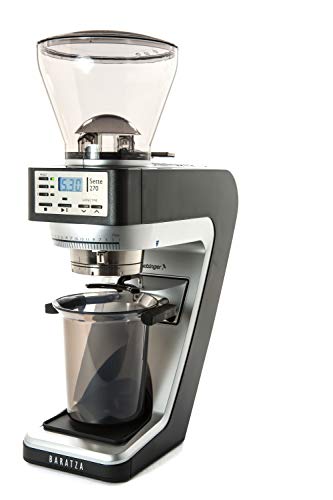
|
Baratza Sette 270 Conical Burr Coffee Grinder |
|
 SEE ON AMAZON
SEE ON AMAZON
|
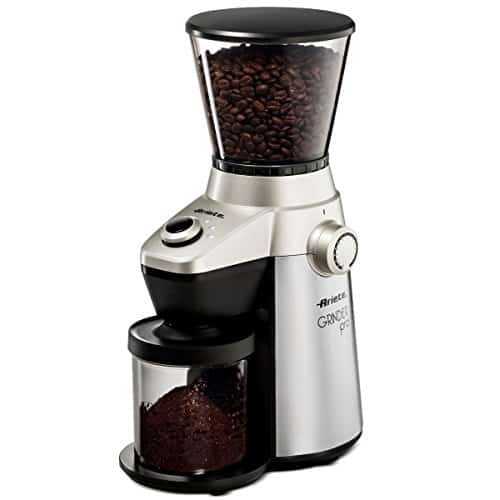
|
Ariete Conical Burr Electric Coffee Grinder |
|
 SEE ON AMAZON
SEE ON AMAZON
|
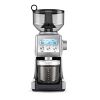
|
Breville Smart Grinder Pro |
|
 SEE ON AMAZON
SEE ON AMAZON
|
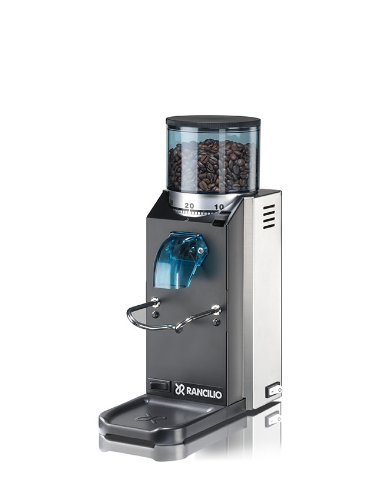
|
Rancilio Rocky |
|
 SEE ON AMAZON
SEE ON AMAZON
|
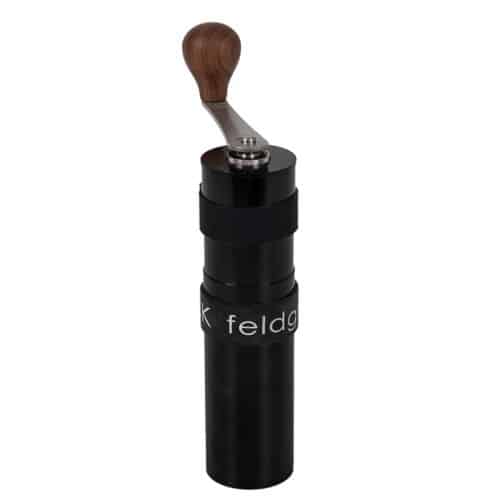
|
Knock Feldgrind |
|
click to check price |
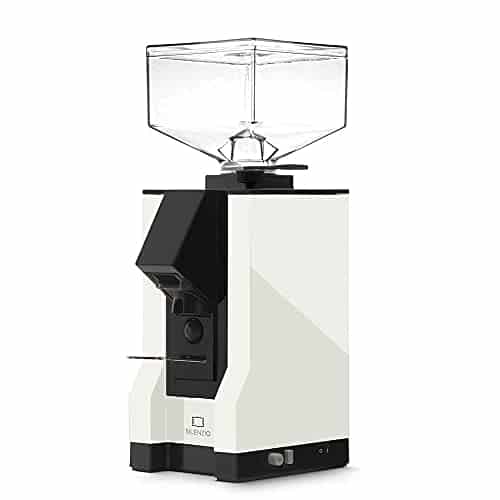
|
Eureka Mignon Silenzio |
|
 See on Amazon
See on Amazon
|
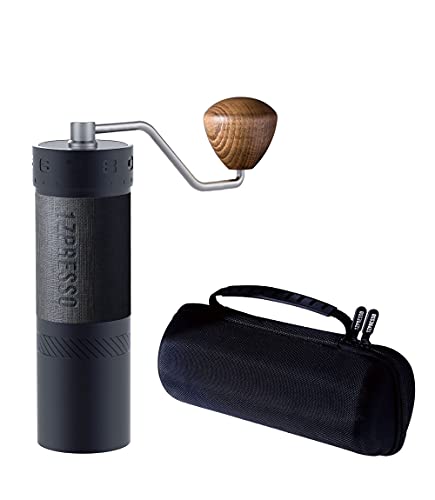
|
1Zpresso J-Max Manual Coffee Grinder |
|
 SEE ON AMAZON
SEE ON AMAZON
|
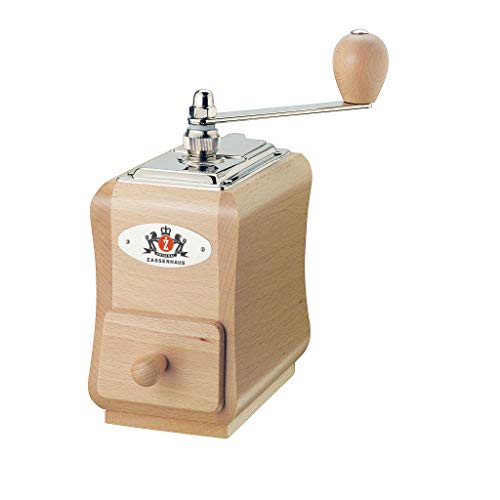
|
Zassenhaus Santiago Manual Coffee Mill |
|
 SEE ON AMAZON
SEE ON AMAZON
|

- Makes juicy, bright, delicious espresso
- Very low retention
- Incredible value for money

- Automatic
- 5.1 x 9.5 x 15 inches
- 275g

- Automatic
- 14 x 5 x 9 inches
- 378g

- Automatic
- 12.5 x 8.5 x 16.3 inches
- 510g

- Automatic
- 9.8 x 4.7 x 13.8 inches
- 295g

- Manual
- 2.0 x 2.0 x 7.9 inches
- 35-40g

- Automatic
- 15.7 x 11.8 x 8.6 inches
- 300g

- Manual
- 8.9 x 4.4 x 4.2 inches
- 35-40g

- Manual
- 8.3 x 3.5 x 8 inches
- 30g
How to Choose an Espresso Burr Grinder
Some brands on the market would like to claim their grinder can do it all, from the perfect size for cold brew right down to the finest Turkish grind. This isn’t what you want from an espresso grinder. The best coffee grinder for espresso has more options for adjustments when creating a fine grind, even if it means missing out on a good range of coarse settings.
Why Grind Size is So Important for Espresso
Think of espresso, and you’re almost certainly imagining the rich aroma and concentrated flavor, but the stats often define the perfect shot. The SCA defines an espresso as 25-35ml, brewed with 7-9g of coffee at 195-205 F, using 9-10 bars of pressure, with a brewing time of 20-30 seconds (1).
The ideal grind for espresso is fine. A coarse grind will allow water through at a much faster rate, while an excellent powder will slow the extraction speed and even decrease the shot volume. You might not be concerned about your standing with the SCA when you pull a shot of espresso, but a change in brew time has consequences for the flavor. Too short, and you’ll end up with an under-extracted, sour coffee. Too long, and your shot will be bitter and lacking in complexity.
You might be wondering why you need so many grind settings if brewing espresso is so specific. The fact is, there is a whole range of other variables that help define the grind size you need. For a start, all espresso machines will vary a little in how they work, and you’ll find that what worked for one machine will be entirely the wrong grind for another.
On a day-to-day basis, you’ll find that different coffee beans require different grind sizes to get the same level of extraction. For example, light roasts extract more slowly, so you may want to grind slightly to extend the extraction time (2).
The accuracy and consistency required are why we don’t recommend blade grinders. Blade grinders chop the coffee beans rather than grind, resulting in uneven coffee grounds.
Grind Settings
If we wanted to make this short, we could tell you that grind settings are better, but it’s unfortunately not quite as simple as that.
There is no correlation between the settings on different grinders – the coarsest setting on one won’t match that of another, and the increments between grind settings won’t adjust the size by the same amount. Even stepless grinders, which in theory allow you to make infinite adjustments, have a minimum and maximum grind size.
Having said that, there’s no real benefit to having a grinder with fewer settings. There is a minimal range of grind sizes that are appropriate for espresso, but it’s better to have the option to customize than not. You don’t have to aim for the largest number of grind settings as a hard rule, but if you’re on the fence, pick the one with more settings.
Burr Size and Shape
The two burr shapes you’ll encounter are conical burrs and flat burrs. Serious coffee connoisseurs will probably have their preference, but we can assure you that both a flat burr grinder and a conical burr grinder will provide a consistent grind if you buy quality.
Conical burrs are the most common you’ll come across. The shape makes them highly efficient, which makes them suitable for manual grinders, but it also means they’re often quieter in an electric grinder.
Flat burrs require more force to grind your coffee beans, so you’ll most often see them in automatic grinders. Due to the horizontal positioning, a flat burr grinder is much more consistent and produces fewer fines. However, this positioning also leads to more ground coffee left in the grinder.
The size of the burrs refers to the diameter, and larger is better. Larger burrs have more surface area, which translates into more coffee beans ground at a time. The less time it takes to grind, the less heat it will generate, preventing any change in the flavor. If you’re using a manual grinder, a faster grinder means less of a workout to get your freshly ground coffee.
Ceramic vs Steel Burrs
The question of ceramic vs steel burrs is one that professionals will take very seriously, but it’s not quite as important for anyone buying a home espresso grinder.
Ceramic burrs are chosen for commercial operations as they generate practically no heat during the grinding process. Ceramic burrs can be prone to chipping, but apart from that they are much more durable than steel and stay sharp for a lot longer before they need to be replaced.
Steel burrs, on the other hand, won’t crack and are much sharper when new. They will wear down over time, but you won’t notice the difference for a home grinder for many years. The heat generated by steel burrs is something to consider, but it shouldn’t be the deciding factor. The average coffee drinker will be grinding for 1-2 shots at a time, so there’s little chance of the heat from the burrs affecting the coffee.
Doser vs Doserless Grinder
This sounds a lot more complicated than it is – what you’re essentially deciding is whether you want a grinder with a coffee grounds container (doser) or one that grinds directly into a portafilter (doserless).
Fans of the doser like that it’s a cleaner process, with fewer coffee grounds ending up on the counter. You can also be less accurate about how much you grind initially, then take what you need for your coffee. On the other hand, a doser can retain some coffee grounds from previous uses. This is a particular issue if you want to switch between coffee brewing methods with very different grind sizes.
A doserless espresso coffee grinder grinds directly into the portafilter, and this often means a few stray coffee grounds might escape, but the grind sizes will never mix. Doserless coffee grinders are suitable for experienced users that know precisely how much freshly ground coffee they need.
Manual vs Automatic
Choosing between a manual coffee grinder and an automatic one is most likely based on how you’re going to use it. A hand grinder is the only option if you want to travel with your grinder or use it in a place where you won’t have access to power. In theory, a manual grinder has the exact grinding mechanism, but it will be limited by the amount of power you can work up with the crank.
Electric burr coffee grinders are much more efficient and powerful and the only choice for high volume grinding, but they have some downsides. They take up more space in the kitchen, create a lot more noise, and are often a lot more expensive. With a manual grinder, all you need to worry about is the mechanism itself, but with an electric one, there are many more parts prone to malfunction.
1. Turin DF83– Best Overall
Specifications
Manual or automatic: Automatic
- Dimensions: 9.8 (L) x 5.9 (W) x 17.7 (H with hopper)
- Capacity: 225g
- Burr type: 83mm stainless steel flat burrs
- Grinder settings: Infinite
The Turin DF83 belies it’s price point with outstanding performance. We were blown away by the quality of the espresso we got from this grinder.
We’d used its predecessor, the DF64 a lot and the DF83 is a substantial upgrade.
We found the Turin DF83 to have exceptionally fast grinding capabilities, making it a time-saver in the kitchen. In our testing, there was minimal coffee retention – between 0 and 0.1 grams. This ensures that almost no coffee is wasted, a feature that places it among the top-rated single dose grinders.
The industrial look of the DF83 adds a touch of elegance, and it comes with all necessary accessories. The build quality is surprisingly robust, and the motor is strong enough to support even the lightest of roasts without stalling.
In our tests, the fines from the grinder were extremely consistent in size when using a Kruve filter. The shots we pulled were full-bodied and juicy with bright and clearly defined tasting notes.
If you’re looking for a grinder that makes superb espresso without breaking the bank, the Turin DF83 might be the perfect addition to your coffee-making arsenal.
2. Baratza Sette 270 Conical Burr Coffee Grinder – Best Overall
Specifications
Manual or automatic: Automatic
- Dimensions: 5.1 x 9.5 x 15 inches
- Capacity: 275g
- Burr type: Stainless steel conical burrs
- Grinder settings: 30 macro steps
If you’re really serious about espresso, you’ll probably want to consider investing in a prosumer grinder. And if that’s the case, Baratza is the brand to look for. Baratza offers semi-professional tech in consumer coffee grinders, and the Sette 270 is one of our favorites.
The 30 grind settings don’t look too impressive at first, but there’s an additional 9 micro settings for a total of 270 – which is where the grinder gets its name. The Sette range of grinders is tuned towards the fine to medium end of grinding, so while they’re not as flexible for French press, it gives them a greater range for espresso.
The grind settings are adjusted manually via a dial, but the timer is set via the small screen and buttons on the front. What’s great here is that you can adjust the timer within 1/100th of a second for highly accurate dosing, especially with the Sette 270’s low grind retention (3). You can save different times as presets for one-touch grinding for different coffee beans or different brew methods.
Under the grinder is a cool adjustable portafilter holder. You can use it to grind directly into a portafilter up to 58 mm, or adapt it to fit the included grounds bin or even famous pour-over brewers like the Hario V60.
It’s one of the more expensive grinders on our list, but the quality warrants the jump in price, especially if you’ve got a good espresso maker.
3. Ariete Conical Burr Electric Coffee Grinder – Budget Pick
Specifications
Manual or automatic: Automatic
- Dimensions: 14 x 5 x 9 inches
- Capacity: 378g
- Burr type: Stainless steel conical burrs
- Grinder settings: 15
Burr grinders that suit espresso brewing are notoriously expensive, but every so often you come across a budget espresso grinder that surprises you. The simple operation and cheap price tag might put you off, but the Ariete Grinder Pro is an excellent option for espresso lovers on a tight budget.
Of course, you can’t expect the level of control you’d get from a more expensive grinder. The Ariete has just 15 grind settings – but to be fair, that’s as much as some manual grinders. Users do report it performs better with finer grinds, which is all you’ll need for espresso.
The operation is simple, you turn the dial on the side to select the fineness, set the timer, then hit the big start button to begin grinding. The timer function makes this a hands-free process. Still, with only 10-second increments available, you’ll get a more accurate dose by using the manual setting, especially when you consider the speed of the grinder, which can get through the full hopper of coffee beans in under a minute.
People outside of Italy might not know the Ariete brand so well, but it’s been producing kitchen appliances since the 1960s. The brand is now part of the DeLonghi group.
4. Breville Smart Grinder Pro – Best Value for Money
Specifications
Manual or automatic: Automatic
- Dimensions: 12.5 x 8.5 x 16.3 inches
- Capacity: 510g
- Burr type: Stainless steel conical burrs
- Grinder settings: 60 macro steps
Regardless of the type of coffee, you’re brewing; you’ll have a hard time finding an espresso grinder more feature-packed than the Breville Smart Grinder Pro at this price point. Breville is known for its innovative tech, and this grinder is an excellent example of the brand’s clever approach to appliances.
The “Smart” part of the name refers to the grinder’s programmability, which is accessed by the user-friendly LCD screen. The most apparent two settings are the grind size and number of seconds, which will grind into the hopper or directly into your portafilter. Once you know your way around the machine, you can save your options and choose the number of cups you’re brewing to get started. If you want to skip the smarts, there’s also a manual brew function.
Of course, it’s the grind that matters, and the Smart Grinder Pro delivers on both consistency and the range of grind settings.
Very few countertop grinders that can handle pour-over-sized grinds can function well in the very fine espresso range as well, but the Smart Pro is undoubtedly one of them.
Tech Gear Lab
You have 60 macro settings for manual brew methods, but there are also 10 micro settings built into the top burr, giving you a staggering total of 600 possible settings. Some users have found the consistency wavers once you reach the very coarsest settings, but for anything finer, it outclasses even more expensive coffee grinders (4).
5. Rancilio Rocky – Best Flat Burr Grinder
Specifications
Manual or automatic: Automatic
- Dimensions: 9.8 x 4.7 x 13.8 inches
- Capacity: 295g
- Burr type: Stainless steel flat burrs
- Grinder settings: 55
The Rancilio Rocky is one of the most popular coffee grinders on the market, and for a good reason. This is a true workhorse that will be more than capable of taking on your home coffee needs for years to come.
The 50mm flat stainless steel burrs are on par with what you’d get in an entry-level commercial machine, capable of greater speed and consistency than those for consumer use. Combined with a commercial-grade 140-watt motor, this gives the Rocky an output of 3.5 pounds per hour – more than you’d ever want to grind at home.
The Rocky SD is the doserless version with a removable portafilter rack. Push the pulse button to grind directly into your portafilter, or remove the rack to fill up the container of your choice. There’s no timer or scale, so you’ll need to weigh your beans before you grind or get used to eyeballing the correct amount.
You won’t get the tiny adjustments you would on other coffee grinders as a stepped grinder. But the Rocky Rancilio is designed for espresso, and with 55 grind settings, you’ll have enough to play with here.
The durability, performance, and value for money the Rocky offers make it our pick for the best flat burr espresso grinder.
6. Knock Feldgrind – Best for Travel
Specifications
Manual or automatic: Manual
- Dimensions: 2.0 x 2.0 x 7.9 inches
- Capacity: 35-40g
- Burr type: Titanium coated conical burrs
- Grinder settings: Stepless
The Knock Feldgrind somehow combines a large capacity bean hopper (for a hand grinder) with a slim profile to create a coffee grinder that’s perfect for travel. It can take the same 35-40g as the J-Max below but is smaller and more lightweight.
The Feldgrind was discontinued in 2018 but has been reinstated due to popular demand. The new model includes upgrades that give it a fresher look and an improved grinding experience.
…the Feldgrind is a perfect balance of grind quality and portability for a quality-conscious consumer.
The Coffee Compass
Now with a wooden handle, the longer crank makes for smoother after grinding. You’ll notice a small hole in the arm at the grinder end, which allows you to see through to the grind settings without removing the handle. The grind settings are also very user-friendly. Although the Knock Freldgring is a stepless grinder, clearly marked numbers are on the dial. So not only can you fine-tune your grind, but you can also remember where it was.
The body is made from light but tough aluminum to cut down on weight. Inside you’ll find titanium nitrided burrs and an over-built shaft, giving you durability where it’s needed most.
7. Eureka Mignon Silenzio – Quietest Grinder
Specifications
Manual or automatic: Automatic
- Dimensions: 15.7 x 11.8 x 8.6 inches
- Capacity: 300g
- Burr type: Hardened steel flat burrs
- Grinder settings: Stepless
The entire Eureka Mignon range is known for being easy on the ears. Among them, the Silenzio (meaning “silence” in Italian) stands out as being the quietest of the lot.
The secret lies in the thick metal case that provides excellent sound insulation. Rubber dampeners have been placed around the motor and moving parts to reduce vibration, with a claimed noise reduction of 20 decibels compared to other coffee grinders (5).
All of the Mignon lines share the same boxy design. Like it or hate it, the simplicity removes any distraction from the process, with just a small dial for adjusting the grind settings on the top. Like the Rancilio Rocky, this coffee grinder has 50mm flat steel burrs to give it greater consistency and speed, with an output of up to 1.6 g/s on espresso grind settings and up to 2.3 g/s for coarser grinds.
You do the dosing by way of a 1-14 second timer, which is our only complaint about the Mignon Silenzio. It can be a little tricky to access, and the fact that the numbers aren’t marked on the dial makes it less intuitive. Alternatively, you can switch to manual grinding.
8. 1Zpresso J-Max Manual Coffee Grinder – Best Manual Grinder
Specifications
Manual or automatic: Manual
- Dimensions: 8.9 x 4.4 x 4.2 inches
- Capacity: 35-40g
- Burr type: Titanium-coated conical burrs
- Grinder settings: 90 per rotation
It’s no secret that we’re a fan of 1Zpresso coffee grinders. In a few short years, this Taiwanese brand has made a name by producing some of the best manual espresso grinders at surprisingly affordable prices.
The J-Max is based on the JX and JX-Pro models, with some upgrades to the grinder make it more suitable for espresso. There are 90 clicks per rotation, with an adjustment of 8.8 microns each. This is the finest adjustment available on a 1Zpresso grinder and great news about getting the right espresso grind. Like the other J-Series models, the J-Max has large 48 mm burrs to improve consistency and grind speed. In this case, the burrs have been titanium coated to increase longevity (6).
Unusually for a manual coffee grinder, the adjustment mechanism is on the outside, so you can make changes without removing the base. The grounds container has had an upgrade too. This one has a magnetic catch (rather than screwing on) for a quick and easy release. It’s also larger, with 35-40g of coffee capacity. This does make it larger and heavier but gives you more flexibility for brewing on the go.
9. Zassenhaus Santiago Manual Coffee Mill – Finest Grind Setting
Specifications
Manual or automatic: Manual
- Dimensions: 8.3 x 3.5 x 8 inches
- Capacity: 30g
- Burr type: Carbon steel conical burrs
- Grinder settings: Stepless
The Zassenhaus Santiago manual coffee grinder is our go-to pick for Turkish fine powder, but its performance at the finer end of the scale makes it an obvious choice for espresso brewing too.
The carbon steel burrs are adjusted by turning the small nut at the base of the crank handle. With stepless grind settings, you can essentially have an infinite number of grind sizes here. The downside to this is that there are no numbers, so you’ll have to find a way to mark your favorite settings or get to know them by feel.
The Zassenhaus range of traditional coffee grinders all features this vintage wooden design, referencing the company’s history dating back to 1867. And in true traditional style, these things are built to last, with a 25-year guarantee on the grinder mechanism.
For a manual grinder, it’s not particularly portable, so this isn’t your best choice for traveling. It does still have some advantages over an electric grinder. However, it’s quieter, more energy-efficient, and you can easily pack it away when not in use.
This grinder style was originally called a “lap grinder” or “knee grinder” as it was designed to be placed between your knees while grinding, but it works just as well on the countertop.
The Verdict
How you choose your espresso grinder will depend on many things, including the accuracy you need, whether you plan to travel, and your budget. Based on performance, our pick for the best home espresso grinder is the Baratza Sette 270. It’s an investment, but it pays off in terms of grind consistency, grind speed, and accurate dosing.
FAQs
The best coffee beans for espresso are usually medium or dark roasts, as these have less chance of being sour with the short extraction time. Anything labeled as espresso beans isn’t a different kind of coffee, and this just means that the coffee has been sourced and roasted in a way that the brand thinks would work well for espresso. Don’t be afraid to experiment with lighter roasts; just make sure that your beans are recently roasted and freshly ground.
You get good crema on your espresso by sticking to some essential guidelines. Start with fresh coffee beans, use the correct grind size, use the correct ratio, and tamp your coffee grounds well. Crema is often seen as a sign that the espresso shot has been extracted correctly, but it’s possible to get good crema on a terrible tasting coffee and vice versa.
No, you can’t make espresso without an espresso machine. Espresso needs to be extracted at nine bars of pressure, whereas an AeroPress produces less than 1 bar, and the Moka pot produces around 1.5 bars (7). It might not be a true espresso, but you can get a rich, concentrated coffee that you can serve as-is or use as a base for cafe-style drinks like lattes or cappuccinos.
Yes, espresso has more caffeine per fluid ounce than other coffee brewing methods. A single 1 oz shot of espresso contains around 50 mg of caffeine, whereas 1 oz of French press contains just 8 mg of caffeine (8). However, it’s crucial to consider serving size. Espresso is often consumed as a 2 oz double shot for a total of 100 mg of caffeine, whereas you might serve french press in an 8 oz cup for a total of 145 mg of caffeine.
- Defining the Ever-Changing Espresso – 25 Magazine: Issue 3. (2018, February 17). Retrieved from https://scanews.coffee/2018/02/01/defining-ever-changing-espresso-25-magazine-issue-3
- Riportella, K. (2019, October 9). Adjusting A Brew Recipe To Your Coffee Roast Level. Retrieved from https://perfectdailygrind.com/2019/10/how-to-adjust-your-brewing-recipe-for-coffee-roast-level
- Kelso, C. (2018, October 04). Grind Retention: What, why, and is it a big deal? Retrieved From https://clivecoffee.com/blogs/learn/grind-retention
- Mutter, M., & Powell, M. (2021, August 9). Breville the Smart Grinder Pro Review. Retrieved From https://www.techgearlab.com/reviews/kitchen/coffee-grinder/breville-the-smart-grinder-pro
- Silent Technology. (n.d.). Retrieved December 24, 2021, from https://www.eureka.co.it/en/plus/id/93.aspx
- Changing Grinder Burrs. (2021, February 16). Retrieved from https://www.baristahustle.com/blog/changing-grinder-burrs
- AeroPress FAQs: Everything you ever wanted to know about it. (n.d.). Retrieved from https://www.aeropress.co.uk/pages/faqs
- Coffee (brewed). (n.d.). Retrieved December 24, 2021, from https://www.caffeineinformer.com/caffeine-content/coffee-brewed

Coffee expert and industry insider, I’ve dedicated years to mastering the art and science of coffee making. From scrutinizing particle fineness to evaluating burr shapes, I delve into the minutiae that elevate coffee from good to exceptional. Whether it’s a complex pour-over or a robust espresso, my insights cater to those who don’t just drink coffee, but experience it.

